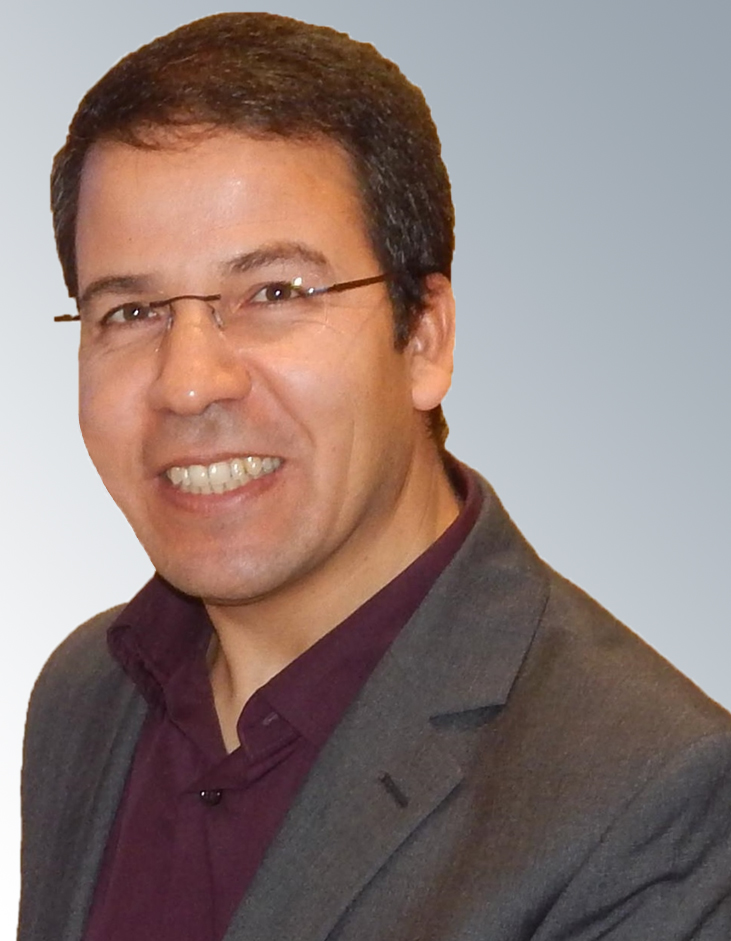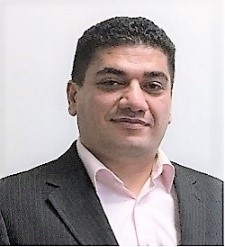
Ahmed CHEMORI
CNRS Senior Researcher, IEEE Senior member
LIRMM, University of Montpellier, CNRS, Montpellier, France
Biography: Ahmed Chemori received his M.Sc. and Ph.D. degrees, both in automatic control from Polytechnic Institute of Grenoble, France, in 2001 and 2005 respectively. During the year 2004/2005 he has been a Research and Teaching assistant at Laboratoire de Signaux et Systèmes (LSS - Centrale Supelec) and University Paris 11. Then he joined Gipsa-Lab (Former LAG) as a CNRS postdoctoral researcher.
He is currently a senior CNRS researcher in Automatic control and Robotics for the French National Center for Scientific Research (CNRS), at the Montpellier Laboratory of Computer Science, Robotics and Microelectronics (LIRMM).
His research interests include nonlinear (adaptive and predictive) control and their real-time applications in different fields of robotics (underactuated robotics, parallel robotics, underwater robotics, humanoid robotics and wearable robotics). He is the author of more than 160 scientific publications, including international journals, patents, books, book chapters and international conferences. He co-supervised 19 PhD theses (including 17 defended) and more than 40 MSc theses. He served as a TPC/IPC member or associate editor for different international conferences and he organized different scientific events (e.g. PKM 2016 and PKM 2018 Summer Schools, WIR 2017 and Robo-Rehab 2019 workshops). He has been a visiting researcher/professor at different institutions (NTNU - Norway, Tohoku University - Japan, EPFL - Switzerland, TUT - Estonia, HUST - China, UPC - China, CINVESTAV - Mexico, UPT - Mexico, Chiang Mai University - Thailand, KAUST - Saudi Arabia, ENIT - Tunisia, ENSIT - Tunisia, UMC - Algeria, etc). He has also delivered various plenary/keynote lectures at different international conferences.
Speech Title: Assistive Control of Rehabilitation Exoskeletons: From Concept to Real-Time Experiments
Abstract: Assisting disabled and elderly people in daily activities using wearable devices has gained a particular interest during last decades due to the highly increasing rate of dependent people. The rise in life expectancy is set to continue; combined with the decrease in birth rates, this should further accelerate the aging of the population. Consequently, this will certainly have a great impact on the development of assistive wearable devices.
Thanks to the latest advances in portable device technologies in terms of compact/miniaturized design, low cost and energy consumption, their wearability has known an significant progress.
Indeed, human wearable devices such as exoskeletons, wearable bio-sensors and wearable stimulators are no more considered as fiction science. Furthermore, this field is attracting more and more researchers from different communities (mechanical design, sensors, actuators, control design, etc).
In terms of data measurement, different sensing systems are often used in wearable devices, namely EMG (muscular activities), IMU (human posture), Force sensors (contact with the ground), etc. Commercial wearable products have already emerged, but they are expected to grow considerably in the few coming years within the context of network-connected objects. The enhancement of disabled/elderly people’s abilities in their daily activities, based on this technology, is a key point stimulating design of these systems, with a tendency to low weight and high efficiency devices. These factors are closely related to the success of any wearable device and will have a straightforward impact on the comfort, security and autonomy of the user.
This talk will be focused on wearables robotics challenges, recent advances in this field, and some proposed control solutions for rehabilitation purposes. All the proposed control solutions will be illustrated through either numerical simulations, or real-time experiments.

Hamid Reza Karimi
Department of Mechanical Engineering, Politecnico di Milano, Italy
Director, The International Institute of Acoustics and Vibration (IIAV)
Biography: Hamid Reza Karimi is currently Professor of Applied Mechanics with the Department of Mechanical Engineering, Politecnico di Milano, Milan, Italy. Karimi’s original research and development achievements span a broad spectrum within the topic of automation/control systems, and intelligence systems with applications to complex systems such as wind turbines, vehicles, robotics and mechatronics. Karimi is an ordinary Member of Academia Europa (MAE), Distinguished Fellow of the International Institute of Acoustics and Vibration (IIAV), Fellow of The International Society for Condition Monitoring (ISCM), Fellow of the Asia-Pacific Artificial Intelligence Association (AAIA), Member of Agder Academy of Science and Letters and also a member of the IFAC Technical Committee on Mechatronic Systems, the IFAC Technical Committee on Robust Control, and the IFAC Technical Committee on Automotive Control. Karimi is the recipient of the 2021 BINDT CM Innovation Award, the 2016-2021 Web of Science Highly Cited Researcher in Engineering, the 2020 IEEE Transactions on Circuits and Systems Guillemin-Cauer Best Paper Award, August-Wilhelm-Scheer Visiting Professorship Award, JSPS (Japan Society for the Promotion of Science) Research Award, and Alexander-von-Humboldt-Stiftung research Award, for instance. Karimi is currently the Editor-in-Chief of the Journal of Cyber-Physical Systems, Subject Editor, Technical Editor or Associate Editor for some international journals and Book Series Editor for Springer, CRC Press and Elsevier. He has also participated as General Chair, keynote/plenary speaker, distinguished speaker or program chair for several international conferences in the areas of Control Systems, Robotics and Mechatronics.
Speech Title: Deep Information Fusion for Fault Diagnosis
Abstract: The objective of this speech is to address some challenges and recent results on fault diagnosis of mechanical systems, with a focus on advanced artificial intelligence algorithms developments. Specifically, different deep learning models such as deep supervised, unsupervised and reinforcement learning algorithms are examined to establish a trustworthy intelligence fault diagnosis model. The talk will be concluded with some results on the development of explainable intelligence fault diagnosis framework based on post-hoc visualization methods as well as multi-source information fusion with complementary transferability metric for mechanical fault diagnosis.

John Mo
RMIT University, Australia
Biography: Prof. John Mo is Professor of Manufacturing Engineering and formerly Head of Discipline of Manufacturing and Materials Engineering at RMIT University, Australia. The Discipline has 400 students, in which 150 students are postgraduate and PhD students. Prior to joining RMIT, he was Senior Principal Research Scientist in Commonwealth Scientific and Industrial Organisation (CSIRO), the Australian government research agency. He led research teams with 20 researchers working on many large scale government and industry sponsored projects including electricity market simulation, infrastructure protection, wireless communication, fault detection and operations scheduling. In particular, the fault detection and diagnosis projects have continued from CSIRO to RMIT. The research outcomes have been incorporated into many CNC machine controls to ensure smooth and faultless operations due to complexity and sophistication of this type of machine tools. Prof. Mo graduated from University of Hong Kong in Mechanical Engineering in 1975 and received his PhD from Loughborough University (UK) in 1989. He has over 400 publications including three monographs, 150 journal articles and 220 refereed conferences papers, 15 book chapters, 12 public reports, 15 keynote speeches and undisclosed number of commercial consultancy reports.
Speech Title: Engineering systems fault prediction
Abstract: Modern engineering systems are complex and sophisticated. Any minor issue can be escalated to complete system failure. With Industry 4.0, enormous amount of information can be collected from system processes online – the commonly knonw health monitoring paradigm. The idea is to maintain the system in good operating state. To achieve this goal, many researchers have contributed their efforts using digital signal processing. However, most researches are focused on recognition of fault conditions only. This means by the time when a fault is recognised, at least one problem has surfaced affecting performance of the system. This is not ideal for systems that requires absolute reliability in continuous operation mode.
One of the difficult issues in health monitoring is prevention of faults. Faults are abrupt deterioration of the machine’s capabilities leaving the machine operator almost no time to take remedial action preventing rejects or causing damage to the machine. Detection of this type of machinery faults requires instantaneous machine signal discrimination. Therefore, health monitoring assumes that the system deteriorates over time (but still performing satisfactorily) so that continuous monitoring of certain operating parameters of the system will be able to detect problems before they occur. Therefore, the ability to continuously measure and process signals from the system to check its status is pre-requisite to health monitoring. A good example is monitoring wear and tear on cutting tools. The idea is to monitor certain conditions on the system by some indicative measures based on theoretical model of the operation so that decision to stop and repair can be made before the cutting tool malfunctions.
This paper reviews a range of methods of fault prognosis and explains the development of a new system health condition indicator, Sum Standard Deviation Frequency. This indicator is computed from a new computational process that segments raw data streams into time segments and the segments are synchrosqueezed continuous wavelet transformed. So long as sufficient data is available, the mothod does not link to any application context information of the raw signal data stream hence making it context independent. More importantly, the trend that the system is going into faulty state can be monitored so that while the performance is deteriorating and the system is still working within acceptable conditions, preparation for providing the right repair can be made and the system can be stopped before producing bad outcomes.